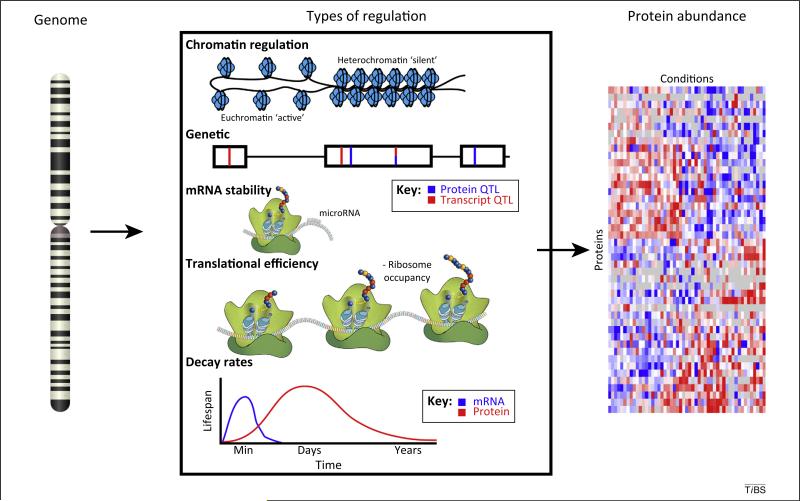Figure 1.
Diversity of regulation. The process of obtaining proteins from a genomic template is governed by many modalities of regulation, some of which are shown. Transcription can be regulated by the chromatin state of the DNA region containing the gene. Genetic regulation as inferred by quantitative trait locus (QTL) analysis identifies variable regions of a gene that affect the final abundance of the gene product. Regions that affect protein and transcript levels partially overlap but are not identical. mRNA stability can be affected by both intrinsic factors of the sequence itself, but also by extrinsic regulation such as through microRNAs. Translational efficiency denotes the amount of protein that is made from a transcript, and is affected by ribosome occupancy and other phenomena (e.g., codon usage). Decay rates for proteins are very different from those for mRNA, both as a global average and for a specific gene. Owing to the complexities of regulation, it is not currently possible to predict protein abundance from mRNA.

